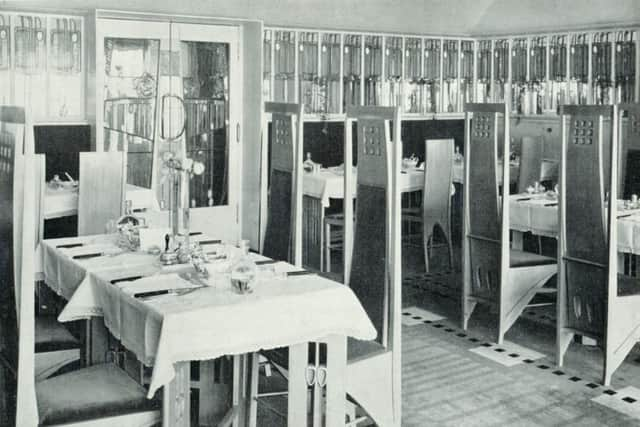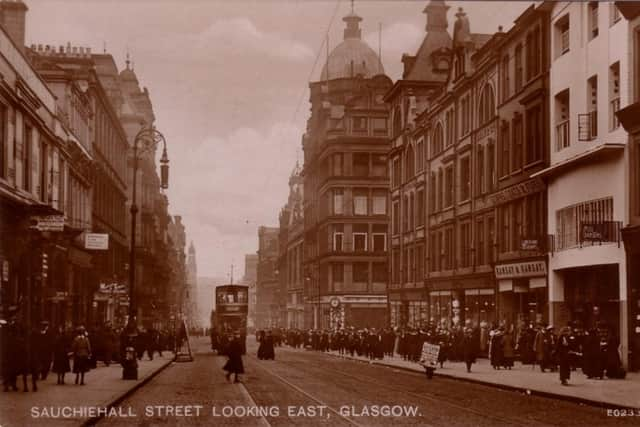Willow Tea Rooms saved after National Trust for Scotland buys Charles Rennie Mackintosh classic
The future of Glasgow’s famous Willow Tea Rooms designed by Charles Rennie Mackintosh and his wife Margaret Macdonald has been secured after the venue was taken into the care of National Trust for Scotland.
The country’s largest conservation charity has used £1.75 million of its reserves to buy the the property, with the support of several other funders, after the tea room ran into financial difficulty and faced the risk of closure.
Advertisement
Hide AdAdvertisement
Hide AdThe two fires at Glasgow Art School and a third fire close to the revered property, which opened in 1903, severely hit income at the tea room, with the impact of the pandemic also sorely felt by the Willow Tea Rooms Trust (WTRT).


Phil Long OBE, the National Trust for Scotland’s chief executive, said the tea room, which was restored by the WTRT to its full glory between 2014 and 2018, was a “natural fit” within the charity’s portfolio, with the tearoom representing an “exceptional example” of architectural heritage.
He said: “Mackintosh is one of the greatest architects of the 20th century, respected internationally for his breath-taking and innovative design. People from around the world travel to Scotland to see his and his wife Margaret Macdonald’s brilliant work together. As the custodians of one of Mackintosh’s other rare masterpieces, the Hill House – on which Macdonald also collaborated – we see the acquisition of Mackintosh at the Willow as a perfect fit.
“The brilliant restoration by The Willow Tea Rooms Trust, with the support of The National Lottery Heritage Fund and many others, gifted back to the nation an exceptional example of architectural heritage that we are proud to bring into our care.


“I want to pay tribute to the foresight of our own board members for their support of our partnership with The Willow Tea Rooms Trustees, which has averted the risk of potential closure and safeguarded this vitally important place for the future, and also to our members and supporters whose generosity over the years has given us the financial means to acquire, secure and protect Mackintosh at the Willow alongside all of the other historic and natural treasures we care for on behalf of the people of Scotland.”
The tearoom’s existing workforce will transfer to NTS employment, Mr Long added.
The Willow is the last remaining original tea room designed by Mackintosh and his wife for Miss Catherine Cranston, who favoured the finest designs for her establishments which became popular, genteel settings to socialise in the city.


The tea rooms are cited worldwide in architectural histories as one of Glasgow’s most important contributions towards modernism and they were, alongside Mackintosh and Macdonald’s other works, highly influential in Europe from the moment of their opening.
Advertisement
Hide AdAdvertisement
Hide AdCelia Sinclair Thornqvist MBE, founder, past chair and trustee of WTRT, said: “From the beginning, it was our aim to restore and conserve this last remaining and most beautiful example of Mackintosh’s masterful designs for tea rooms to the highest possible standards.
“Through this new partnership, I am delighted and relieved that a way has been found to sustain this global icon in Glasgow and Scotland, so that it can continue to be protected and shared.”
Comments
Want to join the conversation? Please or to comment on this article.
